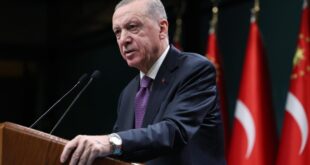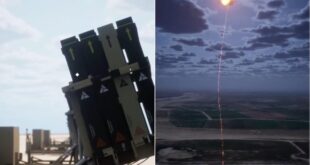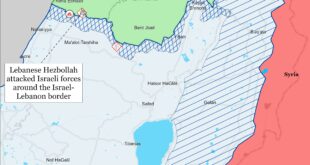European politicians continue to run in all directions to find a way out of their energy crisis. One of them – Simonetta Sommaruga, the Swiss Environment Minister, asked people to ‘shower together’. Others are competing to grant the business of transporting energy from the North of Africa to the continent. All this is not new.
The MidCat: In 2010, a project aimed at transporting 7.500 million cubic metres of gas by linking Catalonia (Spain) to Occitania (France) and from there to other European Union countries.
With an initial estimated cost at over three billion Euro, this MidCat project quasi-blocked just one year later, to be finally stopped in 2018 following cost and impact studies.
Following the energy impact of the condemnable proxy war in Ukraine, Spain has recently proposed relaunching the MIDCAT. But France continued to block the project alleging high costs. Maybe also under the heavy pressure of its extended, powerful business of nuclear plants?
The Italian Connexion: Meanwhile, taking advantage of the deteriorated relations between Spain and Algeria due to Madrid’s support to the annexation of Western Sahara by Morocco, Rome rushed to negotiate with Algiers the transportation of the Algerian gas and oil to Europe through Italy.
But this project hasn’t worked out either.
The Turkish Pipe: At that state, Ankara proposed in September 2022 transporting Russian fossil fuels to Europe through a Turkish pipeline crossing the country’s territory. Also this way out was soon discarded.
The BarMar: During their yet another summit in late October, the European Union’s heads of state and governments launched more debates on how to grant their energy supplies.
At the end, the leaders of Spain, Portugal, and France agreed on 20 October 2022 to replace the MidCat project with a new “green energy corridor” that would be able to transport hydrogen. And they called it BarMar.
Where From? So far, no accurate details are known of the major features of such a project. For instance: where will this hydrogen come from?
According to the European Union’s data, hydrogen accounts for less than 2% of Europe’s present energy consumption and is primarily used to produce chemical products, such as plastics and fertilisers. 96% of this hydrogen production is through natural gas, resulting in significant amounts of CO2 emissions. So?
How Green Is the “Green Energy Corridor”?: The BarMar project’s defenders say that hydrogen is the future of energy. Critics insist that hydrogen is most efficient if it is used around its source.
Anyway, if it is so green, why has the West, including Europe, not turned up sooner to this source of energy?
For How Long. How Much? Who Will Pay?: This BarMar project implies great costs and, according to European sources, it would be a sort of a “transitional” plan. To what? How long will it take to implement the project?
Not having released specific final details, the Spanish, Portuguese and French leaders decided to meet in December 2022 to discuss those details.
Where Will the Money Come From? For now, French President Emmanuel Macron rushed to put the bandage before the wound, saying that the BarMar project would “benefit from European funding.”
The European Union’s funds are composed of the proportional contribution of each one of its 27 member countries, with Germany being the major contributor.
However, in view of the big European financial crisis caused by the COVID-19 pandemic and now exacerbated by Ukraine’s proxy war, a big portion of such reserves have been designated to alleviate the economic and social impacts, let alone the spectacular rise of fossil fuels prices for citizens.
The Military Race: During NATO’s Summit in Madrid, this Western alliance of 30 countries, decided to further militarise Europe by increasing the continent’s spending on weapons and multiplying its troops, in addition to further extending its presence in Africa. Such militarisation process implies high costs to Europe.
In addition, following the United States’ huge weapons supplies to Ukraine, which for now are estimated at more than 17 billion US dollars, European countries have also continued to send weapons to Ukraine.
Here, some European politicians started talking about the urgent need to replenish the continent’s “empty weapons shelves.”
Furthermore, the European leaders have just decided to transfer to Ukraine up to 1.5 billion US dollars… every single month… as part of the estimated 3 to 3.5 billion… a month… that the West decided to send to Ukraine.
Is the Fossil Fuels Rush Over Soon? Not really. Germany seems to be thinking about reopening their nuclear plants to produce electricity.
Norway is reported as planning to increase oil production from the Northern Sea. The United States, being the world’s largest oil producer, has doubled its liquified gas supplies to Europe.
Venezuela, Saudi Arabia: Washington decided that the heavily sanctioned Nicolas Maduro’s government in Venezuela is not all that bad, therefore the US has approached Caracas to increase its fossil fuels production.
At the time, Western leaders pressured the Organisation of the Petroleum Exporting Countries (OPEC), which groups 13 oil-exporting ‘developing nations,’ to pump more oil and gas in the market.
Having OPEC’s top producer: Saudi Arabia shown reluctance, the US-led West has threatened to punish their own “friend and ally” — the Saudis, through sanctions.
Carbon, Fracking: Meanwhile, several European states, mostly the EU Eastern member countries, have been steadily intensifying the extraction and use of another fossil fuel: coal.
And one more European country however is no longer an EU member: the United Kingdom plans to extend the business of “fracking”.
Further to the United Kingdom’s parliamentary debates around the already ousted Liz Truss Conservative government plan to lift the 2019 decision to ban fracking, the British Broadcasting Corporation (BBC) reminded that hydraulic fracturing, or fracking, is a technique for recovering gas and oil from shale rock.
And that it involves drilling into the earth and directing a high-pressure mixture of water, sand and chemicals at a rock layer in order to release the gas inside.
Environmental organisations and activists worldwide continue to warn about the high dangers to Earth of carrying out such an activity. An activity that, by the way, is still widely extended in the world’s biggest fossil energy producer–the United States.
 Eurasia Press & News
Eurasia Press & News




